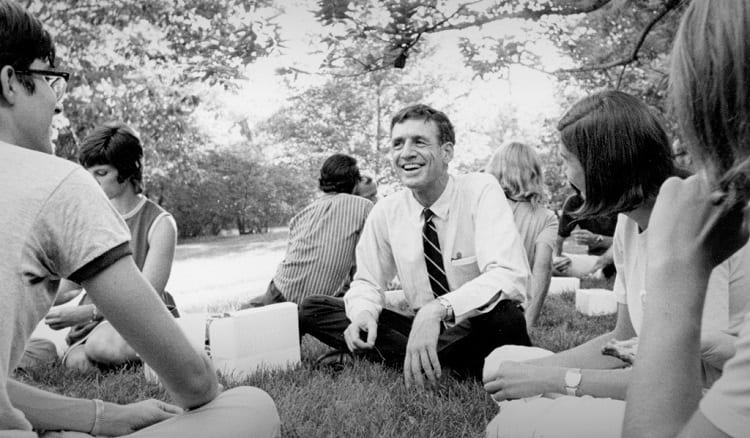Chancellor Emeritus William H. Danforth, MD, who served as chancellor for 24 of his more than 65 years of service to Washington University in St. Louis, died Wednesday, Sept. 16, 2020, at his home in Ladue, Mo. He was 94.
Dr. Danforth, who was also an emeritus trustee, led the university into an era of remarkable accomplishment in higher education, scholarship and clinical care.
“Throughout his nearly seven decades of leadership and service, Bill forged a profound and indelible legacy that will remain in our community in perpetuity,” said Chancellor Andrew D. Martin. “Most notably, we will remember Bill for taking the university from what was once known as a commuter campus to the world-renowned institution it is today, including raising the prominence of the School of Medicine — Bill’s academic ‘home’ and the place where his leadership and service at Washington University began.
“In addition to his innumerous accomplishments, we will also remember Bill for his passion for our mission, his relentless pursuit of excellence, and his abiding appreciation for and commitment to the people who make up our Washington University community,” Martin said. “Indeed, anyone who has ever been in the presence of Bill Danforth knows how special he was and how much he cared for this place and the people who have resided, studied and worked here.”
A private funeral will be held. The university will hold a memorial service at a later date.
During his chancellorship from 1971 to 1995, Washington University grew in national and international recognition for its teaching and research. The university strengthened its academic programs, significantly expanded resources for scholarship and scientific discovery, and completed its transition from a local college to a national research university.
By the time he retired as chancellor in 1995 and became chairman of Washington University’s Board of Trustees, his list of accomplishments included the establishment of 70 new endowed faculty professorships; construction of dozens of new buildings; tripling the number of student scholarships; and growth of the endowment to $1.72 billion endowment, which at the time was the seventh largest in the country.
